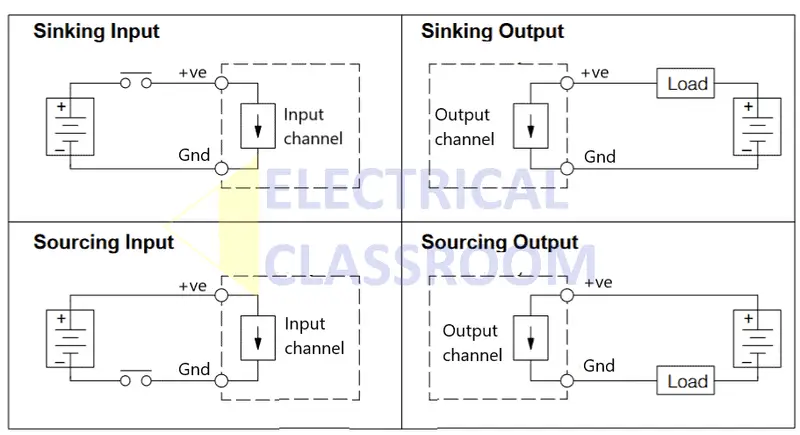Sourcing and sinking are the core terms of PLC wiring and can greatly affect the reliability and functionality of your control system. In this article, we will explore these fundamental concepts and ensure the success in design and installation of a PLC system.
What is sinking and sourcing?
Sinking and sourcing refer to two distinct methods of connecting input and output devices to a PLC’s digital input and output (I/O) modules. They apply only to DC input or output. These methods determine how current flows between the devices and the PLC, influencing the overall circuit design and functionality.
Sourcing and sinking depend on the direction of current flow between the I/O channel in the IO card and the field device.
Sinking I/O channel: Acts as a ground terminal for the input.
Sourcing I/O channel: Acts as a positive voltage terminal for the input.
To understand the difference between sourcing and sinking, first you should understand the difference between NPN and PNP transistors.
Difference between NPN and PNP transistors | NPN vs PNP Transistor
Difference between sinking and sourcing
| Sinking | Sourcing |
|---|---|
| A sinking input circuit provides a path to ground for the sensor or switch connected to it. | A sourcing input or output provides the DC voltage to the load. |
| A sinking IO channel of a PLC requires a NPN transistor. | A sourcing IO channel of a PLC requires a PNP transistor. |
| A sinking input will have currrent flowing into it. | A sourcing input will have current flowing out of it. |
